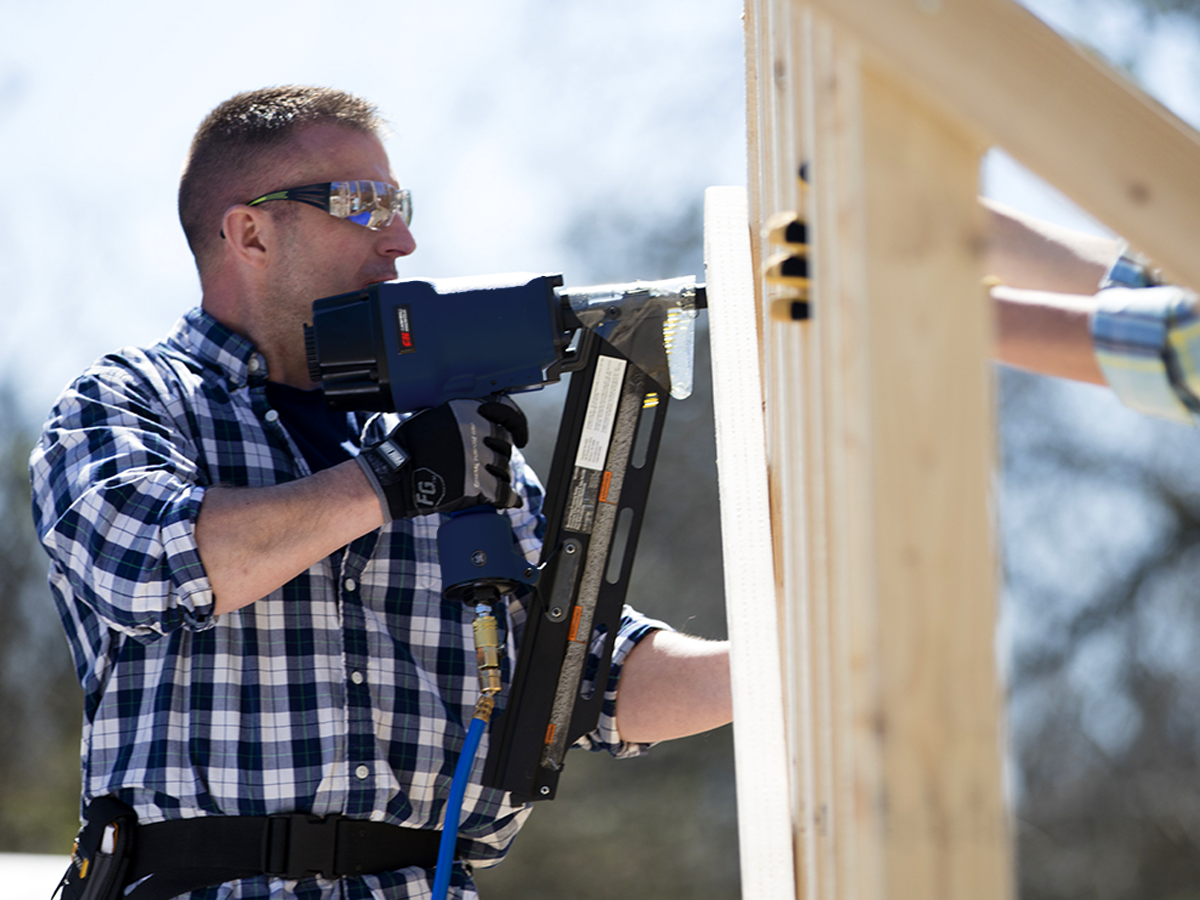
Nail guns and staplers are important tools in the weekend warrior’s arsenal. They can be used for a variety of projects, ranging from small reupholstery jobs to light construction work.
You may be looking for a framing nailer, a finish nailer, a brad nailer or a roofing nailer. Choosing the right nail gun for the job is essential. But where to start? Read on.
Small or large nail gun?
Small-body nail guns include brad nailers, finish nailers and crown staplers. These are smaller in size and used for smaller jobs, like those commonly found in woodworking or carpentry. If you are installing crown molding or reupholstering a chair, a small-body nail gun or stapler is likely the tool for you.
Large-body nailers typically include framing nailers and roofing nailers. These nailers are used for more technical projects such as framing out a basement or installing roofing shingles.
Larger nail guns typically have a higher purchase cost but also allow users to buy replacement parts for wear items on the gun, which helps extend tool life and provide greater return on the investment. Light commercial applications and contractors typically have more use for framing nailers and roofing nailers.
A good rule of thumb is to consider your applications and the size of nails you will use, and then pick the corresponding nail gun that will do the job. Different types of nail guns can be used with different nail lengths. A typical brad nailer, for example, shoots nails that are 3/8 inch to 1 1/4 inches in length, while a larger framing nailer typically shoots nails from 2 to 3 1/2 inches in length. For woodworking projects, a brad nailer is a good choice. If you’re constructing a fence, a framing nailer is a good option.
Complete even more projects by purchasing nailer kits that offer a variety of nail guns.
Maintenance is key
Proper lubrication helps keep your nail gun performing as it should. Regularly oil the O-rings inside the gun using compressor oil or 30-weight non-detergent oil. This helps prevent dry rot of the O-rings that can cause gun failure.
Don’t use air tool oil in a nailer. Air tool oil has solvents that will break down and damage the O-rings inside the nail gun.
Proper nail gun safety
Read your owner’s manual to find the correct safety guidelines, such as wearing safety glasses and other items.
You can also use a piece of practice wood to test your nail gun before your project. Fire a few nails into the practice wood to see how far and deep they go. Read your owner’s manual to find the correct psi settings for your air nailer. Once you know the proper psi settings, use your scrap wood to practice. This test step is especially important for users who are less familiar with nail guns.
Explore the numerous pneumatic nail gun and staple gun options from Campbell Hausfeld to find one that best fit your needs.

